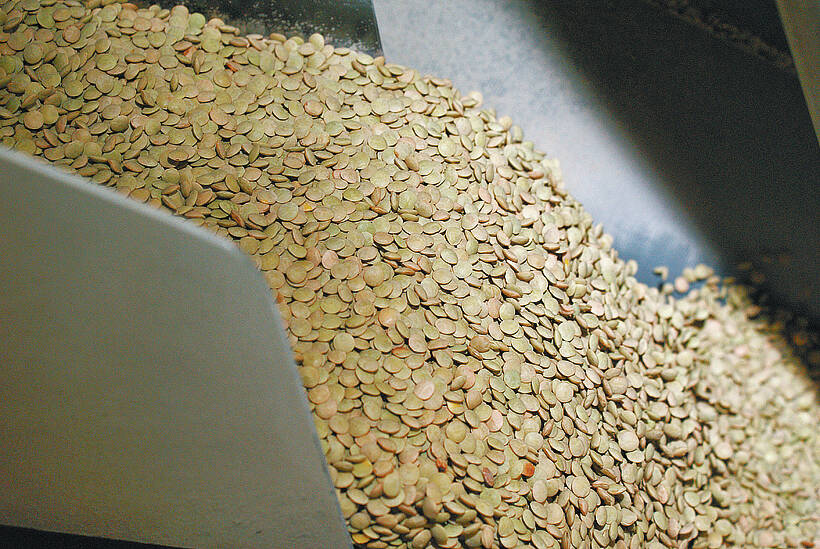Resignation and regret have greeted the announcement of the almost certain demise of the Winnipeg Commodity Exchange flax futures and options contracts.
They are pricing instruments that no one has been able to save.
“It’s quite sad, but it’s seemed inevitable for the last year or two,” said Lawrence Yakielashek of Toepfer Canada, a major flax exporter.
“It’s sad because it was very valuable at one time.”
With the demise of the flax contract dies the last mechanism for farmers to find out the world market price for flax. Now farmers will have to call a number of different buyers to establish a sense of the market value of flax.
Read Also

Green lentil market oversupplied
Farmers in Western Canada can expect price pressure on their new crop of green lentils, as the available supplies among the world’s major lentil-growing nations increase significantly.
The commodity exchange’s oilseeds contracts committee has recommended that the board of directors delist the contracts.
“We couldn’t revive the interest in the commodity so we’re delisting it,” said Will Hill, the exchange’s vice-president.
The exchange has tinkered with the futures contract’s specifications a number of times in recent years to make it more popular with the flax industry and with traders, but has never succeeded.
The most recent incarnation of the flax contract last traded on Dec. 7, 2004.
Farmers, grain companies and processors have all said repeatedly that they want to have a flax contract in place, but few have been willing to use it.
Yakielashek said he found it hard to use the contract when there were so few other players willing to take the other side on trades.
“One or two companies can’t keep the thing afloat. You need the whole industry,” said Yakielashek.
Hill agreed.
“There was not commercial, producer or processor support for the contract,” said Hill.
“The contract hasn’t really traded.”
The flax industry may simply be reacting to a big shift in the role flax plays in the world grain markets today.
Instead of remaining a bulk commodity like wheat or canola, it has become a crop bought by users who have specific needs and who do not base their buying decisions on an open market price.
“It’s been trading like a specialty crop,” said Hill.
“The marketplace has changed and most active market people felt that they could manage the risk without a futures market.”
Yakielashek said farmers will no longer be able to judge the prices they are offered by grain companies in terms of a basis off of a futures price. Prices will now probably come in the form of a flat price offered by a buyer who has made a deal with end users. That should connect producers more closely to the end-use markets they are supplying.
“You’ll have several different pricing situations across the Prairies,” said Yakielashek.
Southern Manitoba prices will probably be based on demand from the American market; central Saskatchewan prices will probably be based on European sales and western Saskatchewan prices will likely come from sales to the Japanese market.
What has been permanently abandoned is the hope for a public flax price, leaving farmers with the choice of either trusting their usual buyer or calling around to see whether local prices reflect the wider market.
“The market was always right when the (commodity exchange) bell went (at the end of each trading day),” said Yakielashek.
“It allowed for a lot of transparency. Now there’s no transparency and no price discovery.
“The industry has evolved into a different character than it was in the 1970s or 1980s, and unfortunately it’s become a specialty crop like yellow mustard.”















